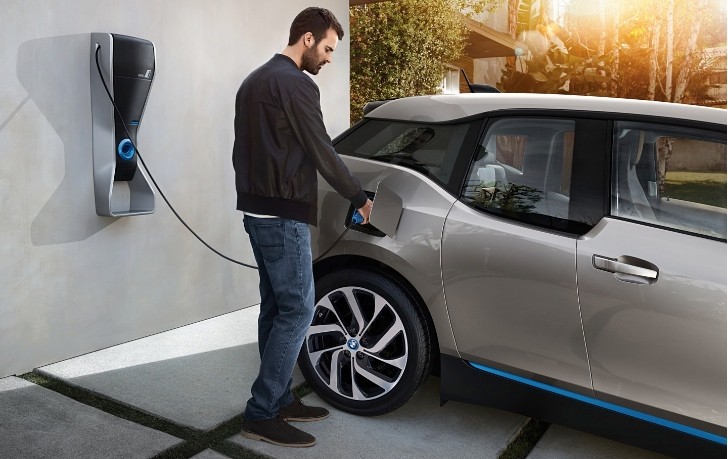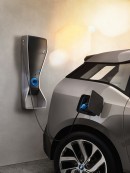Driving cars with zero emissions and without having to stop at gas stations ever again sounds brilliant but what are the underlying costs at hand? The truth of the matter is, while fossil fuels will no longer be used for filling up our cars, electricity will take its place and where that comes from depends on us.
As long as our charging needs are not satisfied using renewable sources, all the effort manufacturers put into making EVs might be just wasted. Imagine that apart from a few well developed countries around the world, most of the rest of the globe is still using charcoal and fossil fuels to create electricity. However, those will also be the countries that will see minimal i3 sales.
Getting back to the matter at hand, BMW wants to make sure its efforts in creating a greener means of personal transportation aren’t in vain. Therefore, at this year’s Consumer Electronics Show they announced the launch of a new pilot project called the “BMW i ChargeForward” program.
Its goal is to make sure the power grid across the biggest cities in the world isn’t overcharged at peak times and that users of the i3 get the best charging rates possible.
Due to begin in July 2015, the pilot will last for 18 months and will take place in San Francisco, in collaboration with Californian energy provider Pacific Gas and Electric Utility Service (PG&E).
Persons interested in taking part in this experiment are welcome to apply, 100 of them following to be picked eventually. You should also know that it you’re picked, you’re eligible for $1,500 bonuses in total.
In doing so, the company will be following the customers’ driving and charging habits and will try to make sure that the most flexible schedule is used to keep drains to a minimum during peak times.
For example, if a user connects his vehicle to the charging station in the evening but does not plan to use the car until the next morning, the BMW i ChargeForward system can exploit the financial benefits of this flexibility and pass them on to the customer.
The BMW i3 drivers participating in the field trial in the Greater San Francisco area will sign an agreement to say that BMW may control the timings of battery charging when drivers connect their car to the grid at home or at a public charging station.
On top of this synchronized charging, BMW also plans to use old batteries from its EVs for storing electricity in the future. Ex-EV batteries will become stationary electric storage systems, buffering electricity that can then be fed back into the grid during periods of high demand, therefore keeping the balance of the system intact.
Getting back to the matter at hand, BMW wants to make sure its efforts in creating a greener means of personal transportation aren’t in vain. Therefore, at this year’s Consumer Electronics Show they announced the launch of a new pilot project called the “BMW i ChargeForward” program.
Its goal is to make sure the power grid across the biggest cities in the world isn’t overcharged at peak times and that users of the i3 get the best charging rates possible.
Due to begin in July 2015, the pilot will last for 18 months and will take place in San Francisco, in collaboration with Californian energy provider Pacific Gas and Electric Utility Service (PG&E).
Persons interested in taking part in this experiment are welcome to apply, 100 of them following to be picked eventually. You should also know that it you’re picked, you’re eligible for $1,500 bonuses in total.
Optimised charging
The main aim of this program is to ensure optimised charging for all i3 users. That also includes boosting the efficiency of the power grid and, therefore, lowering the overall running costs for EVs.In doing so, the company will be following the customers’ driving and charging habits and will try to make sure that the most flexible schedule is used to keep drains to a minimum during peak times.
For example, if a user connects his vehicle to the charging station in the evening but does not plan to use the car until the next morning, the BMW i ChargeForward system can exploit the financial benefits of this flexibility and pass them on to the customer.
The BMW i3 drivers participating in the field trial in the Greater San Francisco area will sign an agreement to say that BMW may control the timings of battery charging when drivers connect their car to the grid at home or at a public charging station.
On top of this synchronized charging, BMW also plans to use old batteries from its EVs for storing electricity in the future. Ex-EV batteries will become stationary electric storage systems, buffering electricity that can then be fed back into the grid during periods of high demand, therefore keeping the balance of the system intact.


